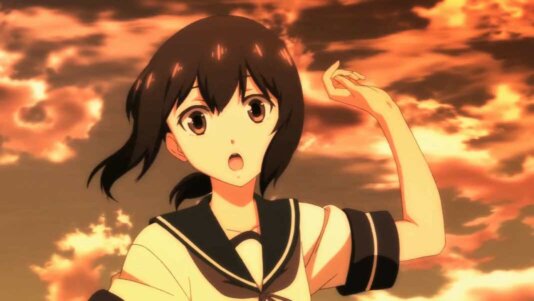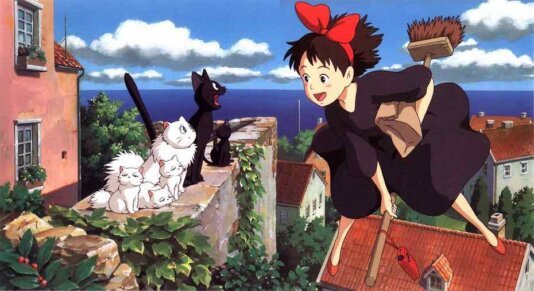- About
- Topics
- Picks
- Audio
- Story
- In-Depth
- Opinion
- News
- Donate
- Signup for our newsletterOur Editors' Best Picks.Send
Read, Debate: Engage.
| October 12, 2024 | |
|---|---|
| topic: | Women's rights |
| tags: | #Japan, #Sexism, #anime, #manga, #gender equality |
| located: | Japan |
| by: | Chermaine Lee |
The Taliban’s recent draconian restrictions on women and girls have renewed global attention to sexism in Afghanistan. In Japan, a comic depicting sexism from the perspective of a 10-year-old girl across five countries, including Afghanistan, has been gaining significant popularity.
Titled Girls' Places, the comic was first published in June 2022 and has gone through multiple print runs due to high demand. The manga reportedly illustrates how girls are mistreated in various societies, including Japan, Saudi Arabia, Morocco, India and Afghanistan - countries with poor gender equality records.
This stands in stark contrast to the prevalent themes in the genre, as Japan's much-celebrated manga and anime often reflect sexist ideals deeply embedded in society, with some even featuring child pornography. The implications are troubling, but experts believe there is hope for change.
In the world-famous manga and anime Doraemon, the male protagonist’s constant desire to sneak a peek at his crush - who is a primary school student - in the shower has been rationalised as a harmless gesture of romantic admiration.
According to scholars and commentators, Japanese manga and anime are rife with sexist themes, among which are sexualised underage female characters, career-obsessed female villains and sexual assault scenes portrayed as acceptable expressions of love or admiration.
Despite being the world’s third largest economy, Japan ranks 116th out of 146 countries in gender equality and scored the lowest among other East Asia and Pacific nations in a recent report by the World Economic Forum.
How does that tie to manga?
Manga and animation, which often reflect Japan’s deep-rooted gender stereotypes, were found to eventually feed into people’s sexist perceptions, a 2017 study showed.
Japanese manga and anime don’t just affect domestic consumers, however, as their popularity has reached a global scale. In 1993, over half of the world’s anime were produced in Japan, and between 2002 and 2017 the Japanese animation industry doubled in size to over USD $19 billion annually.
Anime and manga split into sub-genres that target different audiences in Japan: shonen and seine genre, which traditionally cater to men and boys, and shojo, which broadly appeals to women and girls. In shonen and seine, there is under-representation of female characters in the often action-themed stories. When such characters do appear, they often portray a love interest embodied by an "ideal woman": a "motherly character, the innocent virginal character," who tends to be highly sexualised and bears an unrealistic body shape, according to a 2020 research.
The shojo genre isn’t much better: in addition to predominantly featuring high school romance, in which the female protagonists’ path to happiness invariably entails securing the love of the ideal man and where the character's transformation often involves physical beautification. Men or teenage boys’ jealousy issues and abusive behaviour are often justified by romantic feelings and face little to no consequences in such genres. Scholars argued that even stories featuring powerful female protagonists, like Sailor Moon, were ascribed traditional Japanese gender roles.
Experts say this results from the fact that the artists of both genres are often men who create and consume content replete with such stereotypes.
"The production side [of anime] has been heavily tilted towards men since its early formations in the postwar period," Dr Patrick W. Galbraith, associate professor at the School of International Communication at Senshū University in Tokyo, told FairPlanet.
"This is changing with the rise of highly productive and celebrated women in roles such as director and producer, but men continue to be overrepresented," he added. "In terms of content, there is quite often an assumed straight male viewer. Catering to such a viewer can introduce biases that are overlooked by those who just think it is business as usual."
Certain commentators argue that hypersexualisation of female characters in Japanese anime and manga has exacerbated western fetishisation of Asian women, a phenomenon also attributed to colonialism during the world wars. In the US, over 60 percent of Asian women have reportedly experienced physical or sexual violence from their partners - a higher rate than in any other ethnic group.
This has also translated into female behaviours that might seek to attract the male gaze in some cases: An election campaign for the Tokyo governor earlier this year, candidate Airi Uchino from the right-wing NHK party spoke in “anime-style voice” to Japanese voters, appealing them to watch her campaign broadcast before asking if they think she is sexy.
In April this year, UN Women filed a complaint to Japanese media mogul Nikkei over publishing a comic ad about "an underage girl as a male sexual target risks promoting stereotypes that impose these roles on women."
The rise of the so-called lolicon genre - fictional child pornography in manga and anime – has sparked international debates concerning its harm and whether Tokyo should ban it. The line between lolicon and real-life pornography has been the center of such controversies.
In 2014, Japan officially barred the possession of child pornography, and a year later, the UN urged the government to expand the criminalisation to encompass manga and anime. But Japan has refused to comply.
"Manga/anime fans and critics [...] highlight the lack of statistical support for higher rates of sexual and violent crime involving children in Japan," Dr Galbraith explained. "This is one of the reasons that Japanese politicians did not feel comfortable codifying into law new language that would more stringently regulate this content in 2014."
While advocates for the ban warned the risk of normalising child abuse in real life, activists contended that classifying child pornography manga or anime infringes on people’s freedom of expression.
Artists have the ethical responsibility to challenge social norms in their works, some scholars suggested.
Feminist storytelling in both genres has emerged, such as Ghibli’s Kiki’s Delivery Service, which features a caring and independent young female protagonist, Chie Shinkyū’s Wakako zake, which depicts the culinary journey of an unmarried single young woman and the globally acclaimed anime film Belle about a young woman deriving strength from singing and the support of her female friends – thus defying the stereotype of a weak and submissive Japanese women.
The revolution has spread to North America, Dr Galbraith pointed out.
"For example Rebecca Sugar’s Steven Universe," he said. "The creator is deeply influenced by manga and anime such as Revolutionary Girl Utena, and the depiction of Steven’s trauma and recovery is still to my mind one of the best things to happen to the male hero in some time.
"If more men get in touch with their feelings that way, we will be raising a generation of boys and men who will stand with women and others."
The expert urged for both producers and consumers to be more open-minded to changes in these genres in depicting genders.
"Fearing change and difference, such fans act as if the content is theirs alone and attack those asking for recognition of the presence of diverse bodies, minds and experiences… As the anime industry continues to evolve, it is high time for such fans to know themselves better, to reflect on their positions and see others in their fullness.
"The more diverse the producer and consumer pools, the more diverse the expressions we can expect and enjoy."
Image by CarlitoSan.
By copying the embed code below, you agree to adhere to our republishing guidelines.


